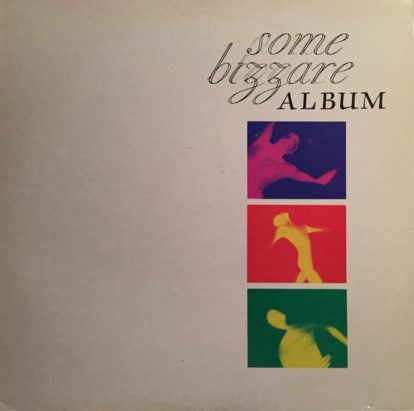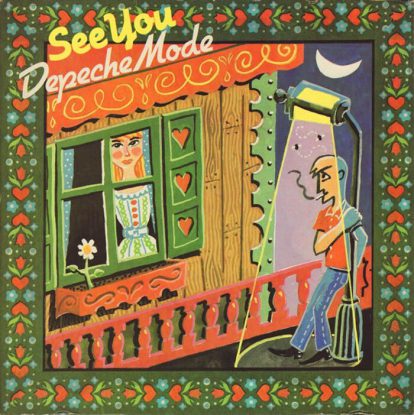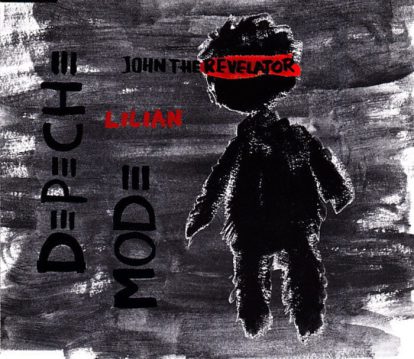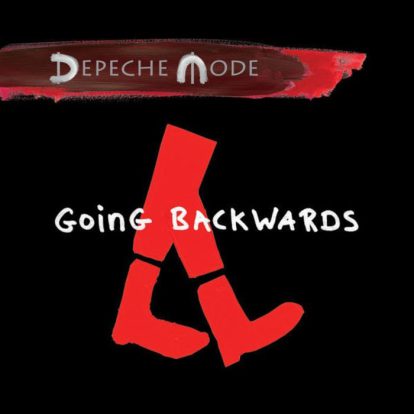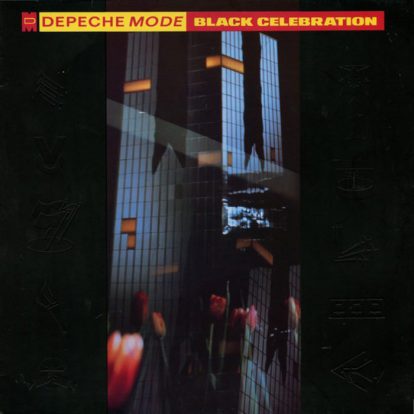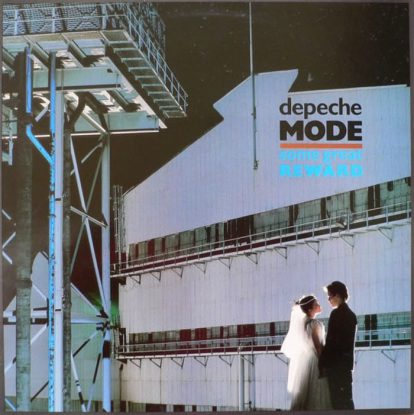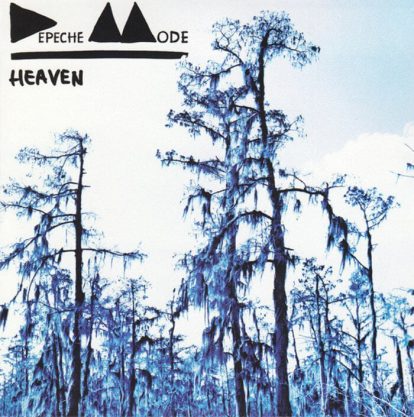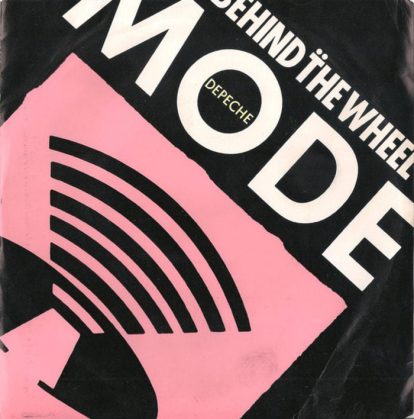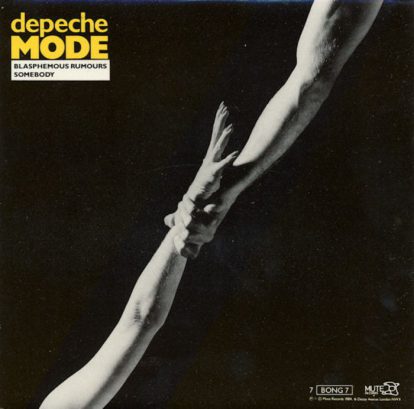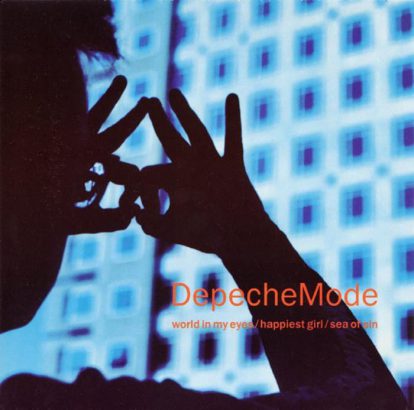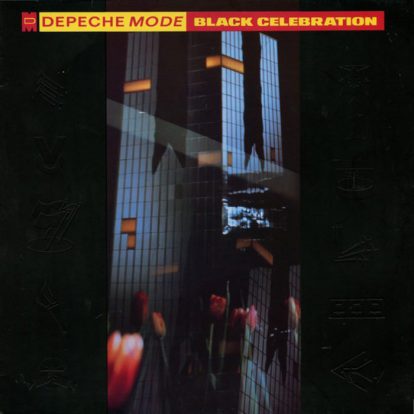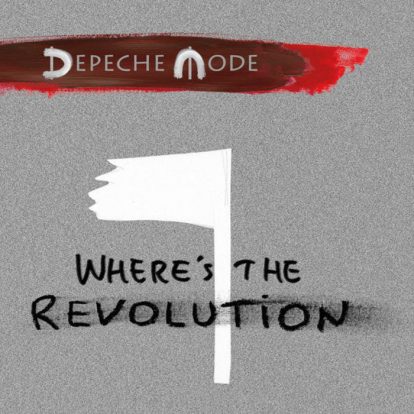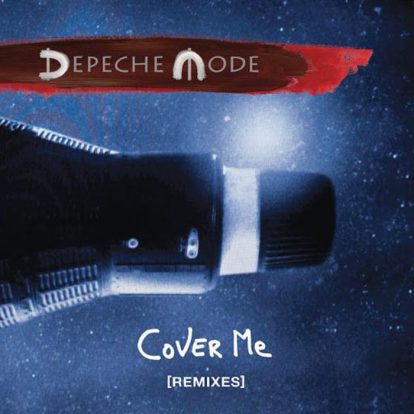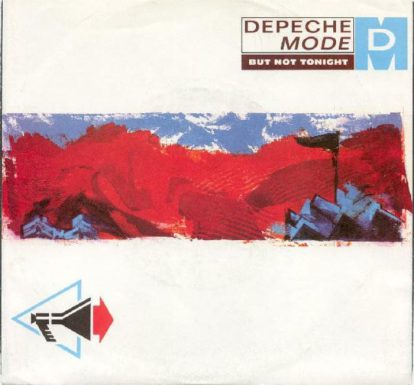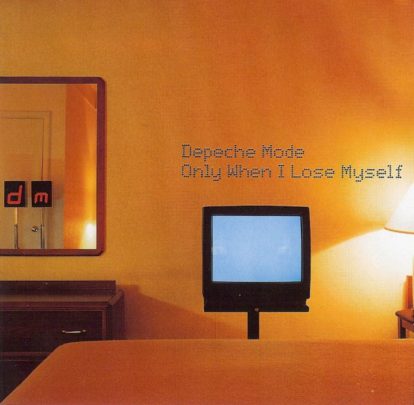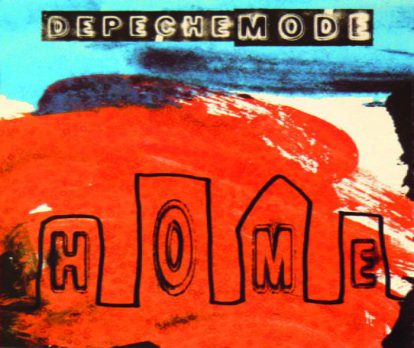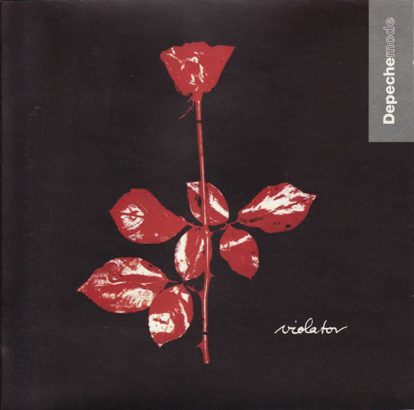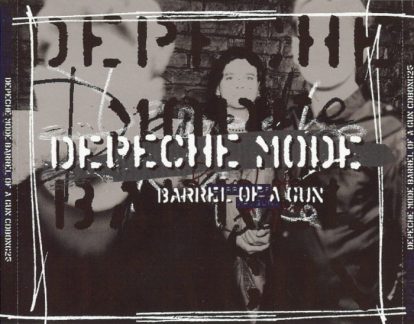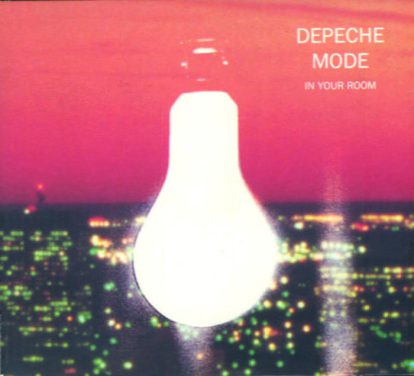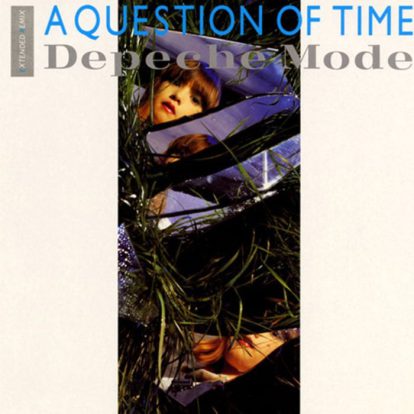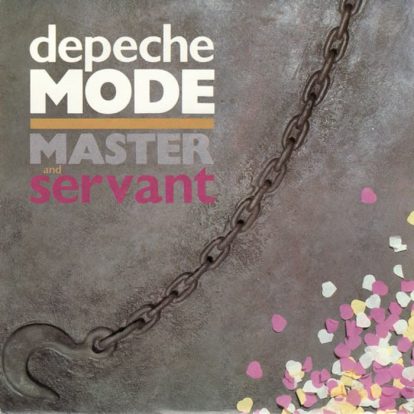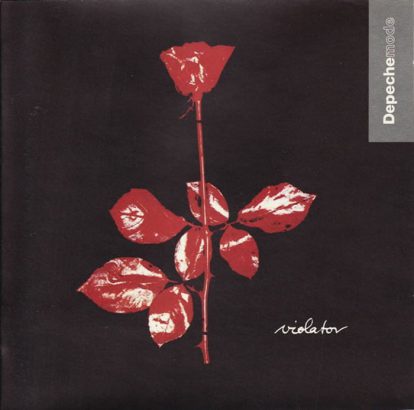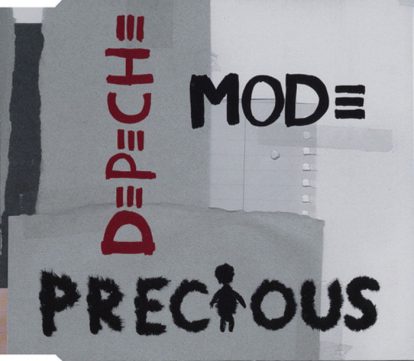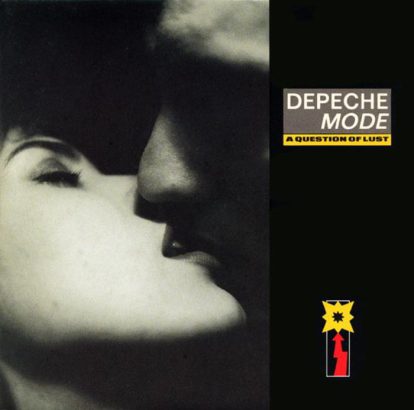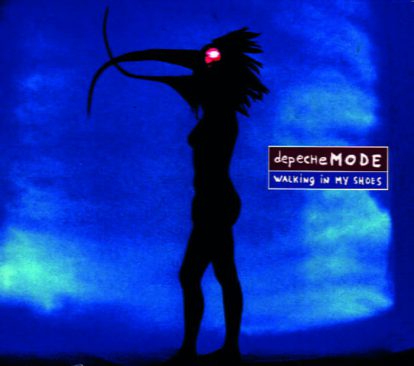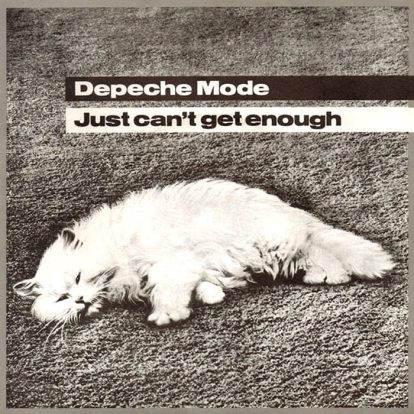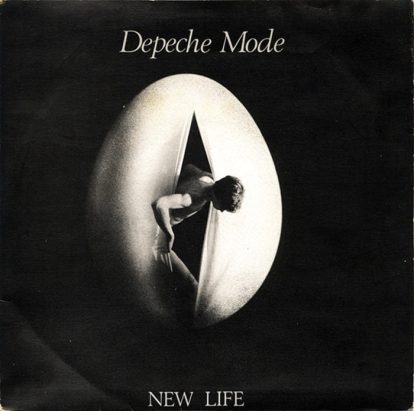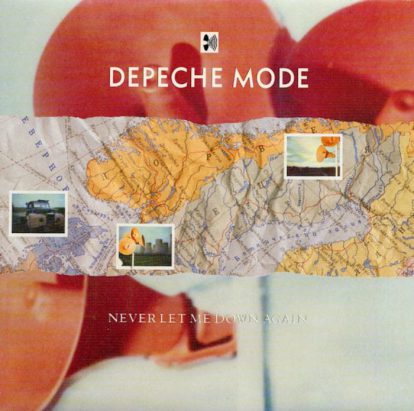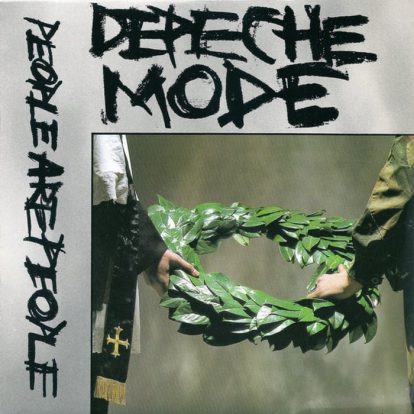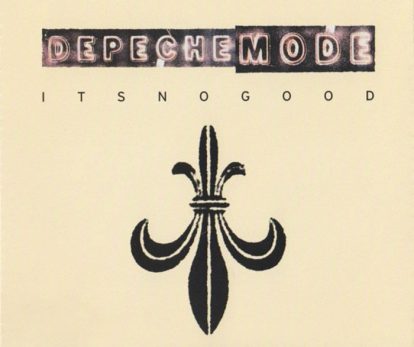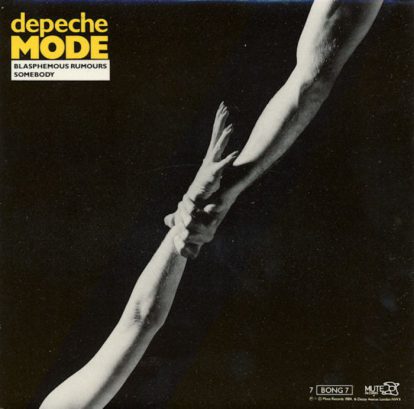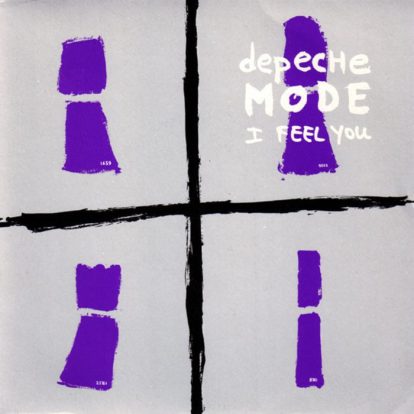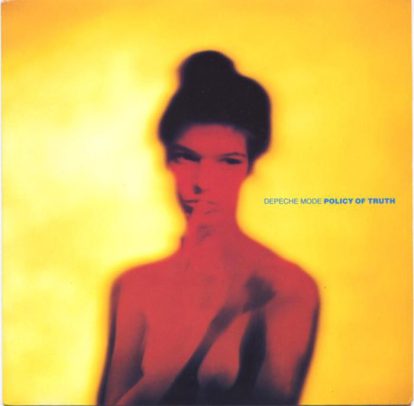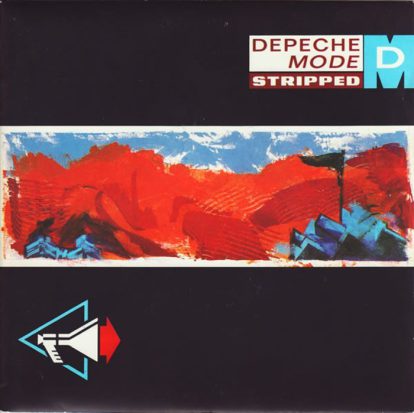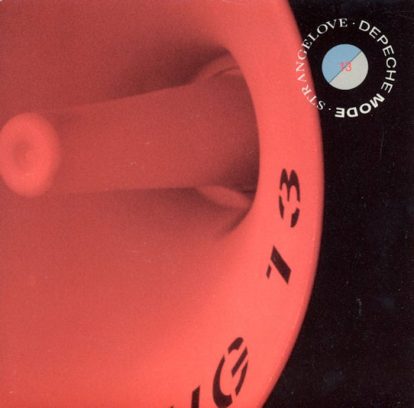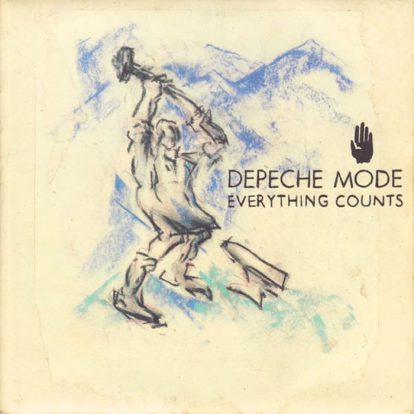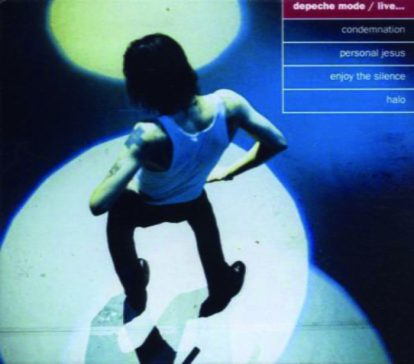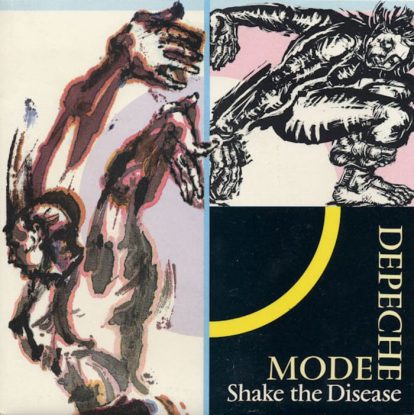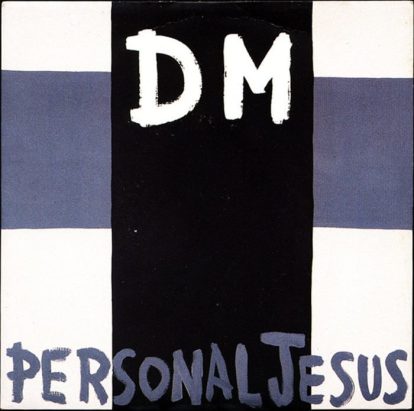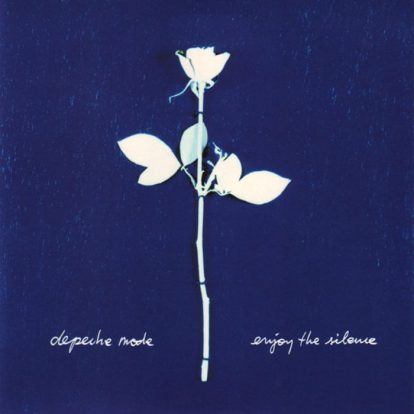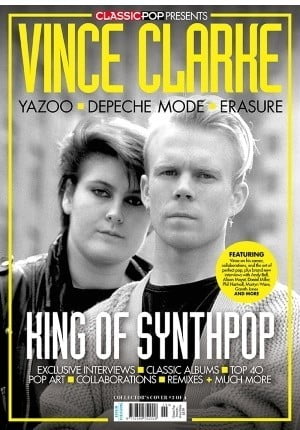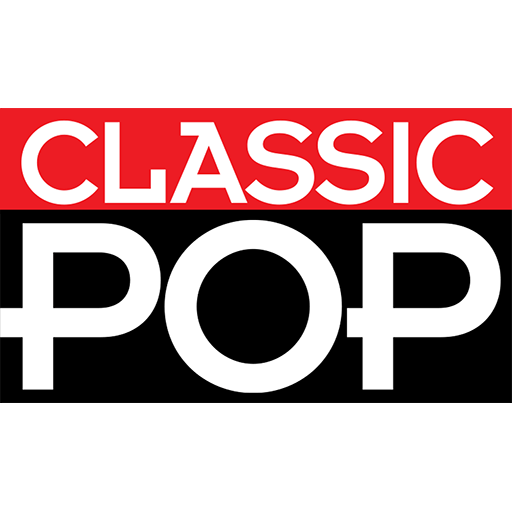
Top 40 Depeche Mode songs
In our list of the top Depeche Mode songs we count down from 40 to 1, spanning a career that’s lasted more than four decades…
As evidenced by the vastly differing individual Top 10 favourite tracks offered up by our very own Classic Pop team, positioning Depeche Mode’s finest musical moments into a coherent order that might be accepted by the masses could be viewed as nothing short of impossible. Nonetheless, it’s our duty as Classic Pop to face the music – and choose.
From the first wide-eyed bars of debut 45 Dreaming Of Me right up to the musically matured sounds and preaching-on-the-pedestal politics of 2017’s Spirit, Depeche Mode is a band of three recognisable eras. The first – their instantly successful early years as fresh-faced, Vince Clarke-led all-out synth-poppers, delivering hooks that still soundtrack many a disco to this day.
The second, with a moodier, more determined Martin Gore seizing the songwriting reins and engaging Alan Wilder as their in-house techno-whizz filter, for a shadowy journey of open experimentation – and myriad electronics – that led to the occupation of the world stage. And their third that was, well, without Alan Wilder as their techno-whizz filter, yet still capably negating another imminent breakdown and carrying the Depeche torch stridently forward – still flame-on.
An Incredible Journey
Plus, throughout all that, the Devil had – at various points – made himself very comfortable in the details of all of it. As such, this is a group who have been dragged viciously through a particularly thorny hedge backwards, upside down and every which way besides in order to get to 2019: chronic substance addiction, losing vital members at vital moments – twice – in their history, yada yada yada…
Reinvention appears to have come naturally to Depeche Mode. Somehow, they have managed to keep their momentum going while – for the most part, anyway – sticking the fingers up at pandering to commercial whims and chart success (only to get that success anyway).
Here, we celebrate the darker sides of classic pop music, dipping into every one of the eras discussed above – and what a unique and incredible journey it has been.
Want more from Classic Pop? Try a print or digital subscription for just 99p and access our exclusive perks and benefits. Find out more here.
40 Photographic (Some Bizarre version) (1981)
Rewinding back to the very first steps of Depeche Mode’s career, this legendary tech-pop offering was the finest track from the equally iconic 1981 Some Bizzare compilation, and by some distance. Yes, the lyrics probably aren’t going to change the world, but its naivety is part of the charm, and when it erupted halfway through with lead synth lines criss-crossing one another in some kind of Doctor Who cyber battle, it was impossible to ignore the potential of the fresh-faced fourpiece from Basildon.
39 See You (1982)
Seen by the masses on Top Of The Pops in 1982, this casually framed electropop fourth single sounded positively futuristic, but was delivered by a band looking as if they were swanning off to some swanky wine bar after the show. Dicky bow or no dicky bow, Martin Gore must have been thrilled. His first self-penned single was the band’s highest entry thus far, landing at UK No.6. The video – partly shot in the luxuriant surrounds of a shopping centre in Hounslow – was the first to include Alan Wilder, as was the tour that followed.
38 John The Revelator (2005/6)
Bolder than bold, and returning once more to religion for its theme, this gospel-tinged attack lifted its ammunition from Blind Willie Johnson’s 1930 blues classic of the same name. But where Blind Willie’s plaintive, guttural interpretation of this standard solely relied on acoustic guitar and a call-and-response vocal with his silky-voiced female charge, Depeche electrified the whole affair and added a murky pop strain. Sharing top billing with the less provocative Lilian, this double A-side single managed a UK No.18.
37 Going Backwards (2017)
Latest album Spirit is yet to be surveyed from a distance, but we’d suggest that in good time it will be viewed as something very special indeed (as proven by its Classic Album status here). Going Backwards is one of its high points, driven by fizzing synths that provide a sturdy electronic soapbox on which Dave Gahan can preach his sermon of stale visions, flawed society and the general demise of the human race – all beamed in real time via satellite. He’s right, of course, but on the strength of this, the band appear to be very much future-bound.
36 Black Celebration (1986)
The title track of the band’s fifth album flung open the door to a new era. The slowly simmering intro built into a screw-it attitude via a mis-en-scene dotted with shuddering pitch-lowered synths, xylophone plonks, pitched vocal samples – including co-producer Daniel Miller’s Winston Churchill impression – and metallic found sounds. For The Washington Post it was a song “likely to reinforce suicidal tendencies”, while for The Quietus it was a “call to rejoice the end of another humdrum day”; for the rest of us, it was pure genius.
35 Lie To Me (1984)
Those keen to further excavate Martin Gore’s songwriting might want to explore his original recording of Lie To Me. The demo shares common ground with The Cure thanks to cleverly correlated melodies and a definite pop edge, but with Gahan’s near-whispered take it’s instantly Depeche. On the face of it the lyrics seem concerned with a relationship, but lines like “Truth is a word that’s lost its meaning/ The truth has become merely half-truth” toy with a more universal comment – so often the case with this era of DM.
34 Heaven (2013)
Although it still performed exceptionally well, 2013’s Delta Machine isn’t necessarily a firm fan favourite – but for one truly majestic track. The hymnal descending bassline to Heaven sets up Dave Gahan’s cloud-scraping vocal, while Martin Gore’s handiwork on his hollow-bodied Gretsch serves up a beautifully conceived refrain, upping the intensity still further. With a video shot in a defunct Catholic church in New Orleans adding to the ambiguity, this solemn, soulful march somehow topped the US Dance Club Songs chart… huh?
33 Behind The Wheel (1987)
What sounds like a stray spinning hubcab (in reality a saucepan lid) sparks this filmic single to life. Following Never Let Me Down Again as the third single from Music For The Masses was no mean feat, but as the dual vocals of Gahan and Gore open with “Tonight, I’m in the hands of fate/ I hand myself over on a plate,” we’re suitably lubricated and equally open to persuasion. For producer Dave Bascombe, the “claustrophobic, unique sound” was the key to its success. With no chorus, this uncommercial single did well to peak at UK No.21.
32 Somebody (1984)
An uncharacteristically pure piano ballad, Somebody settled the nerves when listening to Some Great Reward, as well as balancing the scales against Blasphemous Rumours on the group’s first double A-side single, the first with Gore on lead vocals. He supposedly sang in the nude when recording this plea for companionship, although as he sings of sharing his ‘intimate details’, the image of Martin in his birthday suit is best left alone. A lyrical twist at the end appears to denounce piano-led love songs – a last-minute twist.
31 World In My Eyes (1990)
A jewel in Violator’s crown, this Flood-produced final single almost slipped under the radar. “Martin did the demo on his own,” remembered the late Andy Fletcher in Q. “I don’t remember it standing out… but somehow, in the studio, it all came together brilliantly. Whenever I’m asked which of our tracks is my favourite, I always say World In My Eyes.” The high drama of this synth-pop classic lifted it up to a UK No.17 placing, and No. 52 in the US. The Cure also offered up their take on the Gore/DM tribute album For The Masses – it’s well worth a listen.
Want more from Classic Pop? Try a print or digital subscription for just 99p and access our exclusive perks and benefits. Find out more here.
30 Here Is The House (1986)
1986 was a landmark year for Depeche Mode as Black Celebration strode fearlessly into the shadows, leaving any sense of frivolity behind for good. Following the intense punch of single Stripped on the album’s second side, Here Is The House brought body and soul together, unveiling a grandiose composition and underlining a newfound mastery of layered synthesisers – yet with an inspiring pop uplift still very much in effect. With this oft-neglected classic, Depeche aired their new brand of tender, humanised electronica.
29 Where’s The Revolution (2017)
Spirit’s epic, glacially-building first single didn’t beat about the bush – “You’ve been pissed on for too long/ Your rights abused/ Your views refused”. It was a ballsy move. “I don’t listen to music in a political way, but it’s definitely about humanity, and our place in that,” Gahan told Rolling Stone. “If we want things to change, a revolution, we need to talk about it and about caring about what goes on in the world.” The Corbijn-directed video featured military-themed dancers and Gahan cast as a dictator.
28 Cover Me (2017)
Cut with some neat atmospheric slide guitar, this utterly majestic space-ballad is one of the reasons why we feel Spirit is an album that will steadily grow in stature. For one, Dave Gahan’s voice seems to have aged incredibly well – if anything, it’s the best it’s ever sounded. Lyrically, it’s far superior to much of their older material, and thankfully it doesn’t bother to try and flirt with the commercial whims of those yet to be converted to the Mode as it plays out with an arpeggiated loop, gradually joined by concert hall-sized acoutrements.
27 But Not Tonight (1986)
Written in just 24 hours, this song played second fiddle to Stripped for the UK release but ended up as the main event in the States, much to the band’s chagrin, as the darker environs of Stripped were deemed unpalatable for the US market. It bombed over there but has become a fan favourite, and more recently the band has offered up a plaintive piano rendition at live shows with Gore, not Gahan, delivering an impassioned vocal that marks it out as a definite break from the “constant debauchery” described in its lyrics.
26 Only When I Lose Myself (1988)
Released in September 1998, this cinematic Tim Simenon-produced item helped promote The Singles 86>98 and was the first new material available since Ultra. “It’s about relationships, one of my favourite topics,” Gore told Allstar. “I’ve always found love quite obsessional. There’s something co-dependent about being in love – that’s what love is all about.” The Painkiller (Kill The Pain) Mix, created by long-time fan DJ Shadow and including parts of Leonard LeCour’s soul curio Kill The Pain, is gold.
25 Home (1997)
By mid-June 1997 Depeche Mode had already managed five top 5 singles, and Ultra had summited the UK album chart. A good year, then, and the record’s third single – their thirty-third overall – was about to make it even better. Martin Gore took on lead vocal duties for Home, and with his admission that it is about alcoholism, the reason becomes clear. The press release called it “an epic string-drenched ballad”, and that it is. Remixes come from Jedi Knights, LFO, Skylab and Grantby – all with radically different takes.
24 Halo (1990)
Yet another tune that added much to Violator’s winning hand, it’s unsurprising that Halo was at one point shortlisted as a single. A gently weaving intro, a squelchy, haunting bassline constructed via a pair of iconic synths (the mini-moog and the ARP) and Gahan’s leering vocal – not to mention the addition of plenty of strings to augment the chorus – made this one of Alan Wilder’s favourite tracks from the album. For Gore his lyrics included “a real feeling of wrongfulness”’ and a “sense of guilt”. It all makes for a creeping ride.
23 Barrel Of A Gun (1997)
Transitions are never easy, particularly when a major member leaves, and the band’s 30th single proved a pivotal one. Ultra was Depeche’s first album without Alan Wilder – Daniel Miller remembered “a band falling to pieces”. But with the dust settled, from the jaws of addiction Dave Gahan somehow reclaimed control. “I don’t know if the song was written about me, or for me, or poking at me to say get your shit together,” he told Entertainment Weekly, “but it worked.” The song made UK No.4, their best result for over a decade.
22 In Your Room (1993/4)
One of Alan Wilder’s all-time favourites, In Your Room was the fourth and final single to be extracted from SOFAD. It took several attempts to nail stylistically, but as Dave Gahan’s deep baritone casts its spell atop a cyclical, chiming electric guitar before yet more doom-laden loops come crashing in, we’re reminded this is a unique Mode moment. A variphone synth riff closes the curtain with exquisite perfection. Nirvana producer Butch Vig’s reworked ‘Zephyr Mix’ reached No.8 in the UK, while Brian Eno also offered his own ‘Apex Mix’.
21 A Question Of Time (1986)
Issued in August 1986 just as the Black Celebration tour was nearing a close, this darkened industrial romp managed to sneak its way into the Top 20, but it is far more notable as being the track that set in motion a fruitful and lasting relationship with cult director Anton Corbijn, who directed the video for this electro-goth classic. There are some highly apt themes for a young band in here, like naivety and exploitation (“it won’t be long until you do exactly what they want you to”), but the (slightly faster) single packed a hefty punch.
20 Master & Servant (1984)
Chains, whips, leather… this clattering sample-fest from fourth album Some Great Reward offers its crude simile on life (“Domination’s the name of the game in bed or in life”) via an ode to S&M that made use of a palette of sounds including whips, wood blocks and even a growling tiger (probably best left out of the bedroom, that one). The raunchier elements of this sonic melee eventually got the track banned by more conservative US radio stations, but also went some way to singling out the song as one of the band’s best-loved creations.
Read our article on the cover art of Depeche Mode
19 Waiting For The Night (1990)
Arriving midway through 1990s Violator, what for Spin magazine was a “meditative centrepiece” may appear as a moment of calm, but beneath the surface the band’s dark arts conjure up a haunting brew. A circling, candlelit rhythm flickers its focal point before chiming arpeggios and horn-like synths slip into this most beautiful of electronic ensembles. Dual vocals heighten the voodoo over a sombre minimalism that builds to breaking point, but never yields. The ultimate late-night listen.
18 Precious (2005)
A few years had passed with no new material, but this springboard single from 2005’s Playing The Angel did not disappoint. Reportedly written from the imagined standpoint of Martin Gore’s children as he navigated divorce (“angels with silver wings shouldn’t know suffering”), it’s a powerful, potent backstory. Add Gahan as a tender-voiced messenger and a brittle guitar that pierces through the palette of soft synths halfway, and the hooks sink deep on a track that stole into the UK Top 5 with ease. Precious indeed.
17 A Question Of Lust (1986)
With the band’s main songsmith Martin Gore back at the front for a second time, this is as spine-tingling a vocal delivery as exists in the entirety of the Depeche Mode catalogue. The band call up a dark cloak of shivering electro-goth to soundtrack personal lyrics about trust, suspicion and human weakness. Slowly germinating to an uplifting denouement, this is a track that remains with you long after the final bars have faded away. In the UK it only just broached the Top 30, while in West Germany the Top 10 beckoned.
16 Walking In My Shoes (1993)
The fragile state of the human condition and ultimate judgement are the predominant themes underlying Songs Of Faith And Devotion’s second compelling single. A sturdy central riff cast by Alan Wilder and producer Flood with loops, strings and studio trickery lay at its heart, launching this deep into the UK Top 20. “It was constructed using an unusual method for us, i.e. jamming together,” explained Wilder. “Martin played the guitar, I played bass and we ran a rhythm machine… and after much trial and error, the chorus bass line and guitar pattern fell into place.”
15 Just Can’t Get Enough (1981)
It was on stage during their residency at Basildon’s Croc’s disco that the four-piece cut their teeth, and it was quickly clear that if you stuck Vince Clarke behind a synthesiser, faultless pop would soon ensue. Yet while the breezy ambiance of debut 45 Dreaming Of Me had its throwaway charms, that lucrative man-machine dexterity was first manifest via genius follow-up New Life – and then utterly vindicated when the band dropped this ubiquitous synth-pop classic. Rolling Stone deigned that 1981’s debut LP Speak & Spell was “tuneful pap”, but they were clearly listening to the wrong record.
Read our article on Depeche Mode’s Violator
14 New Life (1981)
Depeche shifted gears rapidly from their debut single to their triumphant second. Though Clarke admitted the lyrics were nonsensical (and he told Sounds the song was “just an old R&B riff”) New Life managed to coax emotion from technology. This early example of electronic-meets-new wave fronted the emerging UK synth-pop movement and culminated in a classic – albeit mimed – Top Of The Pops debut and a breakthrough hit. Still in their day jobs, the band arrived on the train with their synths underarm, and Fletcher received a standing ovation the next day at work.
13 Never Let Me Down Again (1987)
A big hitter from Music For The Masses, its second single was a dimly-lit, thundering electro-rock barrage on the aural canals. Beginning life at Alan Wilder’s home, this “obvious single” was completed in Paris and Denmark. Its taciturn author Martin Gore gave little away, helpfully explaining it was about “nothing in particular”, but many suggested drugs as its subject (“I’m taking a ride with my best friend”). Considered “an intriguing masterpiece” by the NME and “creepy” by Smash Hits, this live favourite stalled at UK No.22. For the full monty, check out the epic near-10-minute 12” mix.
12 People Are People (1984)
With pre-programming completed in a “dodgy rehearsal room in Dollis Hill”, the band decamped to Berlin’s Hansa studios with Daniel Miller and Gareth Jones. An elaborate set-up was laid out across two studios, and the band set about forging their comment on hatred amongst humanity via the new Emulator II synth, factory-sized drums, samples of laughing train passengers, anvil-esque clangs, choirs, bells and timpani. This industrial synth-pop treasure made UK No.4, US No.13 and went to the top in Germany, where it was used as the theme to the 1984 Olympics.
11 It’s No Good (1997)
As Mute’s Daniel Miller confirmed, Ultra was a “transitional record”: Wilder was gone, Gahan had kicked the smack and the mood seemed to be on anything but the music, but under the guidance of Tim Simenon the trio were writing their way out of the hole. On an album without the confidence of Violator or the poise of SOFAD, biographer Trevor Baker commented that Dave’s vocal was “the sound of a man only just coming up for air” – but this added a new, calmer dimension. Beneath the gloomy electronica of Ultra’s second single lies a simple love song… and a great one at that.
10 Blasphemous Rumours (1984)
With brutal, morose imagery and a highly delicate subject matter, this tale of a 16-year old girl who fails suicide, finds Jesus and, at 18, slips into a coma after a hit-and-run and then dies, was heavy stuff. With lines like “God’s got a sick sense of humour/ And when I die I expect to find him laughing”, it was always going to rile the religious community (the less-provocative Somebody was added as a double A-side). For Smash Hits’ Neil Tennant it was “a routine slab of gloom”, but for us its heavily industrial edge, reversed sampling and found sounds make it a future-hugging, off-kilter classic.
9 I Feel You (1993)
It was SOFAD’s lead single that announced a sea change in the band’s sound and one that mainstream radio could no longer ignore after Violator’s global success. It arrived on the airwaves and made its presence felt immediately. Depeche’s new Gahan-driven rock god manifesto was clear from the abrasive, ear-piercing synth chosen as a starting gun, through that pivotal, pure blues-rock riff that holds up his yearning baritone top line. In amongst the sampled drums contorted via synths and looped to fit the Depeche palette lay a love song, and a Top 10 hit to boot – their best so far.
8 Policy Of Truth (1990)
Beautifully layered, this steadily-lifting electronic masterstroke conveying the advantages of telling porkies was the third and final single from Violator. The Depeche train was at full steam when this was unleashed, with the band still immersed in that infamously hedonistic tour. It took time to complete: Alan Wilder recalled over 100 variations for the main riff before the slide guitar was decided upon. The album was out, but this quality item still hit the Top 20 at home and in the US. The KLF’s ‘Transcentral Mix’, with sheep noises, birdsong and telephone sounds, is utter genius.
7 Stripped (1986)
Stop-gaps Shake The Disease and It’s Called A Heart held the fort between Some Great Reward and Black Celebration to promote The Singles 81>85, but this devilishly dour number – a brooding exploration of the negative effects of industry and technology on the human psyche via a bleak, minimalistic backdrop – indicated a move to darker territory. It split the critics, albeit in an unexpected way: pop rag Smash Hits called it “the best thing they’ve done in ages”, while hipper NME hacks found it “morose”… odd. Flood’s sweeping ‘Highland Mix’ was his first contact with the band.
6 Strangelove (1987)
Recorded at The Kinks’ North London studio, Konk, this lyrically ambiguous single takes on themes of love, sex and submission. Set afloat via a plush – and suitably hedonistic – party at a swanky Bloomsbury hotel, it was a tune that split the band. The critics were mostly nonplussed: NME complained the track was “another sortie into Soft Cell-type territory”, while Melody Maker bemoaned the lack of “off-the-wall ideas’. Gore’s original vision was considered a little too poppy and was eventually remixed by Daniel Miller for the Music For The Masses album. A UK No.17.
Want more from Classic Pop? Try a print or digital subscription for just 99p and access our exclusive perks and benefits. Find out more here.
5 Everything Counts (1983)
New member and tech whizz Alan Wilder had settled in by the time of this standout track from 1983’s Construction Time Again. Recorded at electro-pioneer John Foxx’s ultra-hip Garden Studios in East London, the album told of a band willing to head confidently into the darker corners – and Gore’s lyrical prowess was starting to rear its head. With a classy sampled xylophone hook and the dual-vocal spar in full effect, this satirical ode to corporate greed came thrillingly to life. The song was re-released with the 101 live album in 1989.
4 Condemnation (1993)
With its almost hymnal gospel edge and an authoritative, yet bone-tired, sermonic feel, Condemnation was a track that gelled almost magically, with Martin Gore’s potent lyrical strain, summoned to life with Dave Gahan its world-weary conduit, cast as desperate half-possessed preacherman. It was close-recorded, with each member playing their part in the same room, and the organ and percussion augmented the feel perfectly. A sluggish, open-palmed acceptance; the black arts at their best, and a pinnacle of the decade.
3 Shake The Disease (1985)
This non-album treat telling the story of a one-sided relationship was issued to boost Depeche’s two 1985 singles collections and is a flawless example of their ability to deliver pop melodies cleverly cloaked in shadowy vernacular. Alan Wilder remembered an overcooked studio process in which one two-note part had 24 sounds playing it, but when Gore’s fragile refrain (the ‘Understand me” bit) meshes with Gahan’s full-toned lead, it’s the band at their best. Gore also told Hitkrant that the song was designed “to attack the US market”.
2 Personal Jesus (1989)
Arguably the creation amidst Depeche’s catalogue that solidified the band as serious contenders on the world stage, this oblique treatise to the human condition, set to driving electronic rock of a slightly noir disposition, set a tone very much their own – and with a guitar at its epicentre, no less. The concept of a personalised deity was a compelling image that clearly struck a chord with us all, initially introduced – rather cleverly – via an advert taken out in the personal columns of various regional newspapers.
The ad featured the words “Your own personal Jesus”, coupled with a telephone number that when dialled up led to a segment of the track. Canny marketing ploys aside, it’s an equally prodigious piece of songwriting, cemented via Flood’s reliably deft hand in the production department.
Sex, religion and hooks…
Martin Gore cited his inspiration as coming from Priscilla Presley’s Elvis And Me autobiography. He told Rolling Stone: “It’s about how Elvis was her man and mentor, and how often that happens in love relationships – how everybody’s heart is like a god in some way, and that’s not a very balanced view of someone, is it?” Dave Gahan, on the other hand, remembers US TV channels being the source; “There is someone trying to sell you some sort of religion and you have to pay like $20 or something and then they send you your own personal rainbow or whatever you want to call it,” he recounted in 1990. “It just seems all twisted and wrong – that’s why Martin wanted to write the song, because he felt this was making a mockery of the Christian movement.”
Sex, religion and hooks – Personal Jesus not only cleared the lane for Violator, but also cracked America by getting to No.28, despite its lyrical content. Marilyn Manson and Johnny Cash made it their own too, proving just how magnificent this track really is. Released before its parent album was even finished, the dark, beguiling and sexy song was Depeche’s first single to go gold, a UK No.13 and a No.28 in the US thanks to heavy MTV rotation.
And the No.1 Depeche Mode song is…
1 Enjoy The Silence (1990)
Widely regarded as their finest recorded moment, Enjoy The Silence began its life as a simplistic, downcast home demo, recorded by Martin Gore with just a pump organ and his trembling lead vocal. It wasn’t until the band took it into the studio with producer Flood and Daniel Miller presiding that the rather radical idea was floated around to transform it completely, into an uptempo disco track; according to Flood, Gore was far from convinced that it would work (those wishing to hear Gore’s funereal, organ-laden original concept can experience it via the spine-tinglingly creepy ‘Harmonium Mix’, now on YouTube).
Shift forward in time, and Flood remembers the band recording in a studio in the middle of nowhere somewhere in Denmark with only “fields and flies” for company. His latest gizmo, a Roland modular synth, was duly installed in the studio and the new direction began to take shape. A classic – albeit unnamed – disco groove was heedlessly nabbed as a starting point for the metamorphosis, and from out of that snazzy bank of synths came a bassline and some airy atmospherics that clicked almost immediately.
A Timeless Classic…
Around half a day later, Gore had finally decided upon a guitar sound for his ambrosial New Order-esque riff – after an entire day of labouring over it. From then on, they all knew they had something timeless. The Anton Corbijn-directed video found Gahan tromping through desolate landscapes dressed as Antoine de Saint-Exupéry’s famous creation The Little Prince, with deckchair in tow.
The band were not fans, with Dave Gahan “feeling like an idiot” throughout the shoot – so much so that the band shot a second (inferior) promo at the World Trade Center – but they eventually relented. Corbijn’s role cannot be underplayed, and this much-loved video did a world of good in helping the single puncture both the UK and US Top 10s. The song also snagged a Best British Single award at the 1991 BRIT Awards.
Read about Depeche Mode’s Vince Clarke in our Classic Pop Presents special magazine
Check out Depeche Mode’s website here
Want more from Classic Pop magazine? Get a free digital issue when you sign up to our newsletter!
Classic Pop may earn commission from the links on this page, but we only feature products we think you will enjoy.

